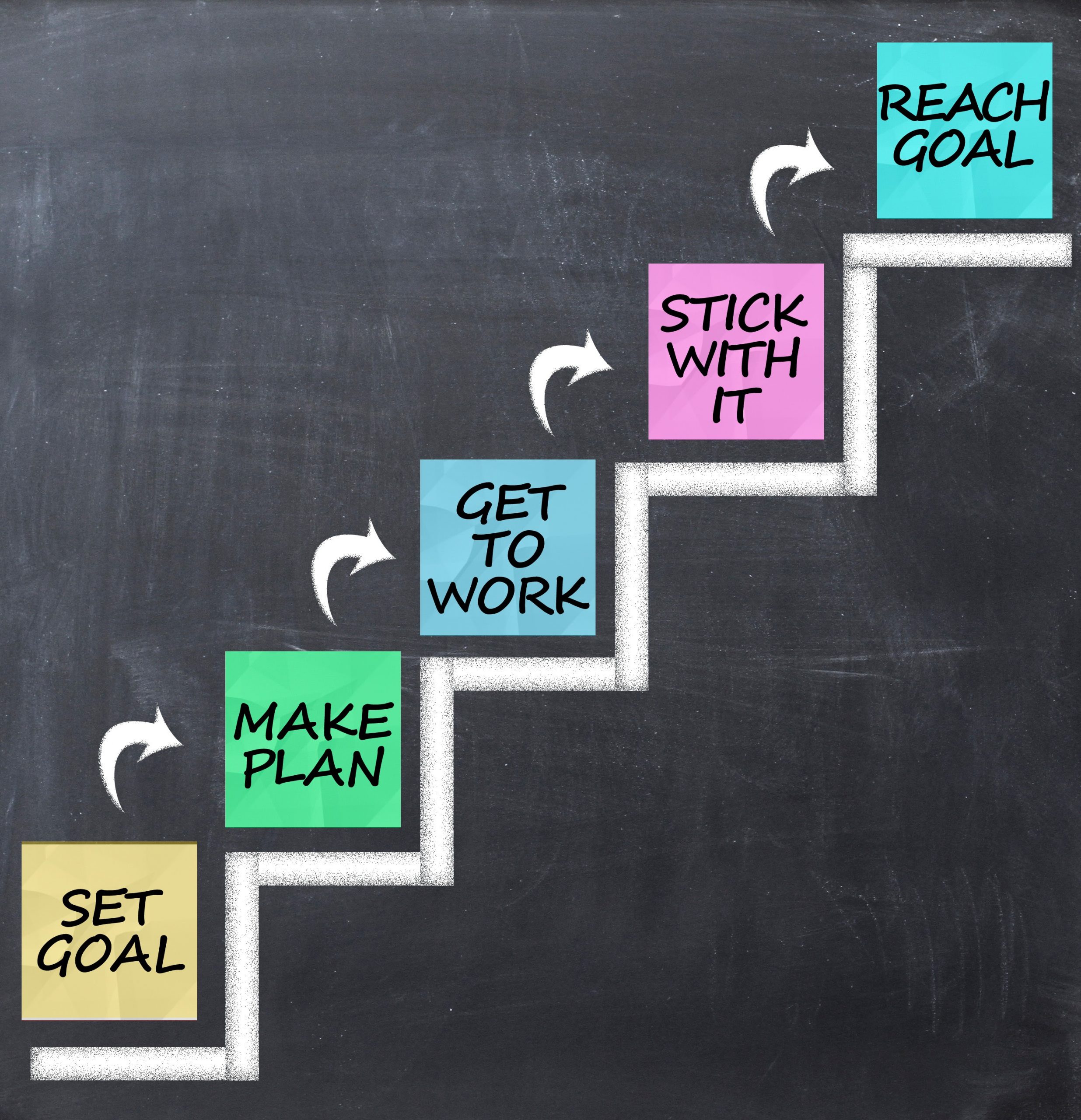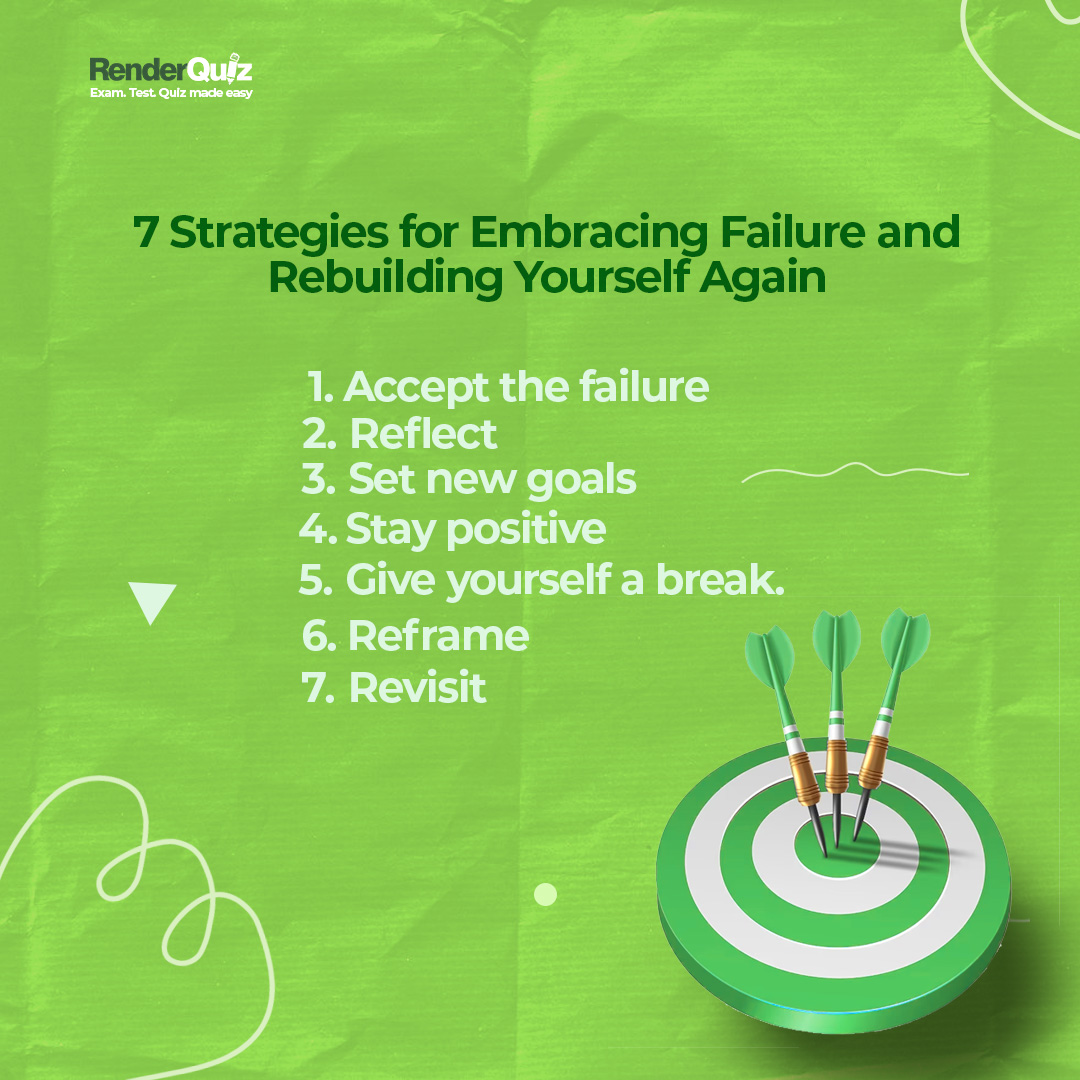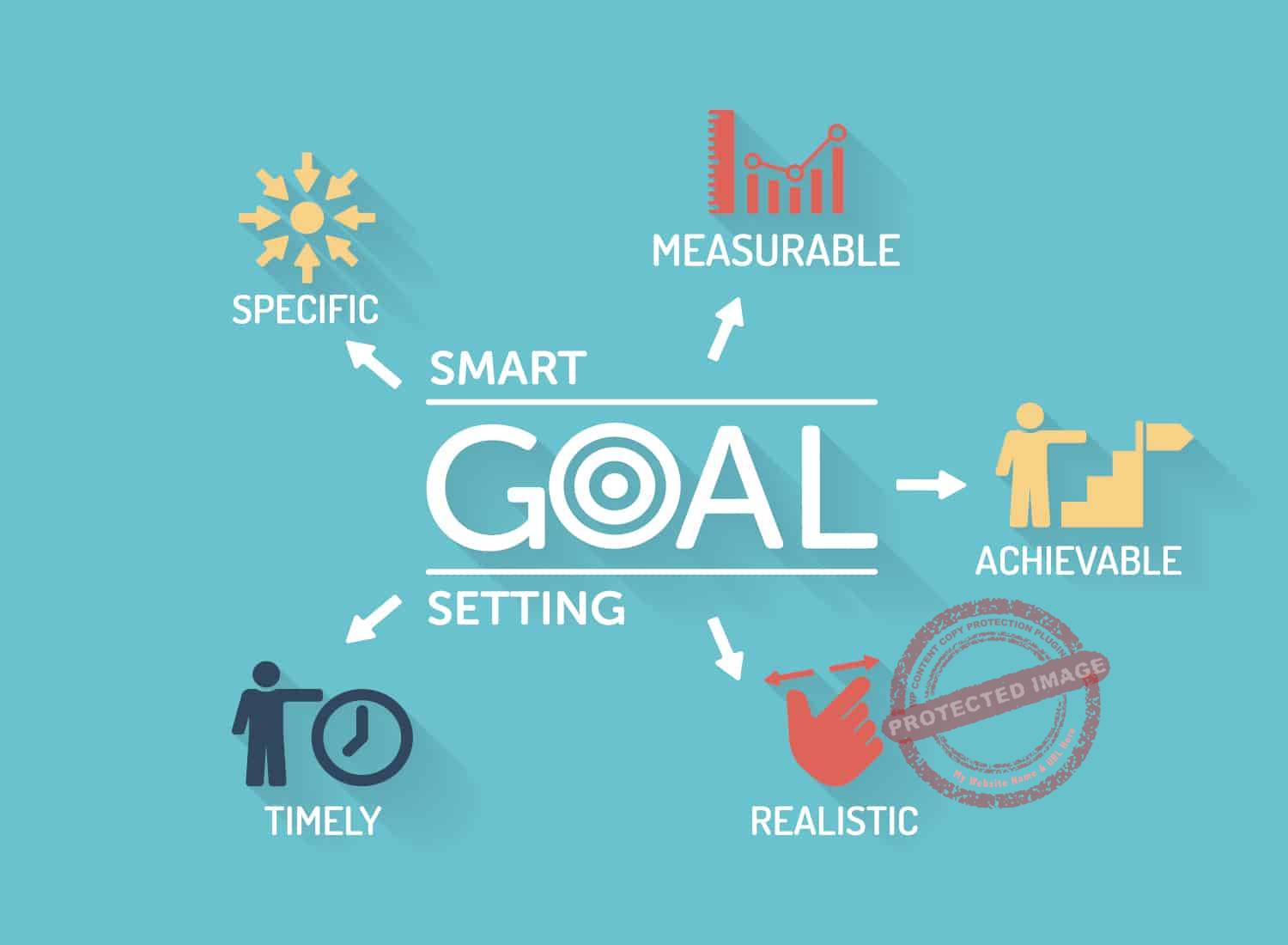Understanding the Psychology of Goal-Setting
In order to effectively set and achieve big goals, it is essential to comprehend the underlying psychology of goal-setting. This process involves several key components, including motivation, self-efficacy, and growth mindset. Motivation refers to the driving force that propels individuals towards their objectives, while self-efficacy signifies one’s belief in their ability to successfully execute the necessary tasks to accomplish their goals. A growth mindset, coined by psychologist Carol Dweck, is the understanding that abilities and intelligence can be developed through dedication and hard work.
Research has consistently demonstrated that intrinsic motivation, or the internal desire to engage in a task for its inherent satisfaction, is a more powerful predictor of goal attainment than extrinsic motivation, or the pursuit of external rewards or recognition. By focusing on the personal fulfillment and growth that can be derived from setting and achieving big goals, individuals are more likely to remain committed and engaged throughout the process.
Moreover, the benefits of setting challenging yet attainable goals are numerous. According to a study published in the Journal of Applied Psychology, individuals who set specific, difficult goals outperformed those who pursued general, easy goals. Specific goals provide a clear target for individuals to strive towards, while challenging objectives foster a sense of accomplishment and self-confidence upon successful completion.

Identifying Your Big Goals: Dream, Visualize, and Articulate
A crucial step in the process of setting big goals is to first identify and articulate what those objectives are. This involves engaging in deep introspection, allowing oneself to dream and visualize an ideal future, and then translating those aspirations into concrete, actionable goals. By clearly defining your big goals, you create a roadmap for personal growth and fulfillment.
To begin, consider setting aside dedicated time for reflection and brainstorming. During this period, allow your mind to wander and explore various aspects of your life, such as career, health, relationships, and personal development. Contemplate your passions, values, and strengths, and consider how you might leverage these elements to create meaningful and inspiring goals.
Examples of big goals may include:
- Career: Earning a promotion to a leadership role within the next two years, or starting your own business in a field you are passionate about.
- Health: Completing a marathon, achieving a healthy body mass index, or adopting a sustainable exercise and nutrition routine.
- Relationships: Strengthening connections with family members, cultivating new friendships, or building a supportive community of like-minded individuals.
- Personal development: Mastering a new language, learning a musical instrument, or developing a meditation practice to enhance mindfulness and self-awareness.
Once you have identified your big goals, it is essential to articulate them clearly and concisely. Write down your objectives, using specific, measurable, achievable, relevant, and time-bound (SMART) criteria to ensure that your goals are well-defined and actionable. Display your goals in a prominent location as a constant reminder of your commitment to personal growth and success.

Breaking Down Big Goals into Manageable Milestones
A critical aspect of learning how to set big goals is understanding the importance of dividing these ambitious objectives into smaller, manageable milestones. By breaking down your big goals into bite-sized pieces, you create a clear path to success, making it easier to track progress and maintain motivation. This approach also allows you to celebrate small victories along the way, fostering a sense of accomplishment and reinforcing your commitment to personal growth.
To effectively break down your big goals, consider the following strategies:
- Reverse engineer your goals: Start by envisioning your desired outcome and then work backwards, identifying the specific steps required to reach that endpoint. This process helps to create a detailed roadmap for success, ensuring that you account for all necessary actions and resources.
- Set SMART objectives: As previously mentioned, using the SMART (Specific, Measurable, Achievable, Relevant, Time-bound) framework is an excellent way to create well-defined milestones. By ensuring that each step is specific, measurable, achievable, relevant, and time-bound, you create a solid foundation for your action plan.
- Create a timeline: Establishing a timeline for your milestones helps to maintain a sense of urgency and accountability. Be realistic when allocating time for each step, considering potential challenges and setbacks. Regularly review and adjust your timeline as needed to ensure that you remain on track.
- Monitor progress: Regularly tracking your progress is essential for maintaining motivation and identifying areas for improvement. Implement tools and techniques, such as journaling, progress charts, or regular check-ins, to monitor your development and make adjustments as required.
By breaking down your big goals into manageable milestones, you create a clear and actionable plan for success. This approach not only makes your objectives feel more attainable but also fosters a sense of accomplishment and resilience as you celebrate small victories along the way.
Creating a Supportive Environment: Leveraging Resources and Relationships
A crucial aspect of learning how to set big goals is recognizing the importance of a supportive environment. Surrounding yourself with resources and relationships that encourage personal growth can significantly impact your ability to achieve your ambitious objectives. By actively seeking out and leveraging these tools and connections, you create a strong foundation for success.
Here are some tips for identifying and utilizing resources and relationships to help you achieve your big goals:
- Educate yourself: Invest in books, courses, and workshops related to your big goals. Continual learning not only expands your knowledge and skills but also demonstrates your commitment to personal growth. Seek out experts in your field of interest and learn from their experiences and insights.
- Find a mentor: A mentor can provide guidance, support, and encouragement as you work towards your big goals. Look for someone who has achieved similar objectives and can offer valuable advice and perspective. Establish a regular meeting schedule to ensure that you stay accountable and motivated.
- Build a network: Connect with like-minded individuals who share your passion for personal growth and ambitious goals. Attend industry events, join online forums, and participate in local groups to expand your network. Sharing experiences, challenges, and successes with others can foster a sense of community and provide invaluable support along your journey.
- Utilize technology: Take advantage of productivity apps, goal-setting tools, and online resources to help you manage your time, track progress, and collaborate with others. Leveraging technology can streamline your processes, increase efficiency, and enhance your overall goal-setting experience.
By creating a supportive environment filled with resources and relationships that align with your big goals, you increase your chances of success and foster a growth-oriented mindset. Embrace the power of connections and continually seek out opportunities for learning and collaboration to unlock your full potential.

Monitoring Progress and Adjusting Your Plan
A critical component of learning how to set big goals is understanding the importance of tracking progress and making adjustments as needed. Regularly monitoring your performance allows you to identify areas of success, pinpoint opportunities for improvement, and maintain motivation as you work towards your objectives. By incorporating tools and techniques for performance tracking, you can ensure that your big goals remain relevant and attainable.
Here are some strategies for effectively monitoring progress and adjusting your plan:
- Journaling: Maintain a daily or weekly journal to document your achievements, challenges, and lessons learned. Reflecting on your experiences can help you identify patterns, celebrate successes, and brainstorm new approaches to overcome obstacles.
- Progress charts: Create visual representations of your goals using charts, graphs, or infographics. Visualizing your progress can provide a powerful motivational boost and help you maintain a clear focus on your objectives.
- Regular check-ins: Schedule routine check-ins with yourself or a trusted accountability partner to review your progress and discuss any necessary adjustments. Regular check-ins can help ensure that you stay on track and maintain momentum towards achieving your big goals.
As you monitor your progress, be prepared to make adjustments to your action plan as needed. Life is unpredictable, and it’s essential to remain flexible and adaptable in your goal-setting journey. By embracing a growth mindset and viewing setbacks as opportunities for learning, you can continually refine your approach and increase your chances of success.

Overcoming Obstacles and Embracing Failure
As you embark on the journey to achieving big goals, it’s essential to acknowledge and prepare for potential challenges and setbacks. Common obstacles in pursuing ambitious objectives include fear of failure, procrastination, and self-doubt. By viewing these hurdles as opportunities for growth and learning, you can develop resilience and foster a mindset that supports long-term success.
Here are some strategies for overcoming obstacles and embracing failure:
- Reframe failure: Instead of viewing failure as a negative outcome, reframe it as a learning opportunity. Analyze what went wrong, identify areas for improvement, and adjust your approach accordingly. By adopting a growth mindset, you can transform setbacks into valuable lessons that propel you forward in your goal-setting journey.
- Address fear of failure: Fear of failure can be paralyzing, preventing you from taking action towards your big goals. To overcome this obstacle, examine the root cause of your fear and develop a plan to address it. Break your goals into smaller, manageable milestones, and focus on making progress one step at a time. Celebrating small successes can help build confidence and reduce the fear of failure.
- Manage procrastination: Procrastination can hinder progress towards your big goals. To combat this challenge, establish a consistent routine, prioritize tasks, and allocate dedicated time to work on your objectives. Implementing time management strategies, such as the Pomodoro Technique, can help maintain focus and productivity.
- Build self-confidence: Self-doubt can undermine your motivation and commitment to your big goals. To boost self-confidence, practice positive self-talk, visualize your success, and express gratitude for your achievements. Surrounding yourself with a supportive network of like-minded individuals can also help reinforce your belief in your abilities.
By adopting a proactive approach to overcoming obstacles and embracing failure, you can develop resilience and fortitude in pursuing your big goals. Remember, the journey to achieving success with ambitious endeavors is rarely a straight path, and setbacks are a natural part of the process.

Maintaining Motivation and Celebrating Success
A crucial aspect of learning how to set big goals is fostering motivation and celebrating successes along the way. Staying committed to ambitious objectives requires resilience, determination, and a positive mindset. By incorporating strategies such as positive self-talk, visualization, and gratitude, you can maintain motivation and reinforce your commitment to your big goals.
- Positive self-talk: Cultivate a habit of positive self-talk to counteract self-doubt and maintain motivation. Replace negative thoughts with affirmative statements, such as “I can do this” or “I am capable of achieving my goals.” Over time, positive self-talk can help reinforce self-confidence and foster a growth mindset.
- Visualization: Regularly visualize yourself achieving your big goals. By picturing yourself in the desired future state, you can strengthen your commitment and motivation to make it a reality. Visualization can also help you identify potential challenges and develop strategies to overcome them.
- Gratitude: Express gratitude for your achievements, both big and small. Practicing gratitude can help maintain a positive perspective, even when faced with setbacks or challenges. By acknowledging your progress and accomplishments, you can reinforce your motivation and commitment to your big goals.
In addition to these strategies, it’s essential to celebrate successes along the way. Recognizing and rewarding your achievements can help maintain motivation and reinforce your belief in your abilities. Celebrations can be simple, such as treating yourself to a favorite meal or activity, or more elaborate, like taking a day off to enjoy a personal interest or hobby.
By incorporating these strategies into your goal-setting journey, you can maintain motivation, foster resilience, and stay committed to your big goals. Remember, the path to achieving success with ambitious endeavors is a marathon, not a sprint, and consistent effort and celebration of successes will help propel you forward.

Conclusion: The Journey to Achieving Big Goals
Throughout this article, we have explored the significance of setting big goals and the steps required to achieve them. By understanding the psychology behind goal-setting, identifying your ambitious objectives, breaking them down into manageable milestones, and leveraging resources and relationships, you can unlock your full potential and experience personal growth.
Remember to monitor your progress, embrace challenges as opportunities for growth, and maintain motivation by celebrating your successes along the way. The journey to achieving big goals is not always easy, but with determination, resilience, and the right strategies, you can turn your dreams into reality.
Now that you have a comprehensive guide on how to set big goals, it’s time to embark on your personal journey. Embrace your ambitions, stay committed, and enjoy the process of self-discovery and improvement. Remember, the possibilities are endless when you set your sights on ambitious endeavors.

